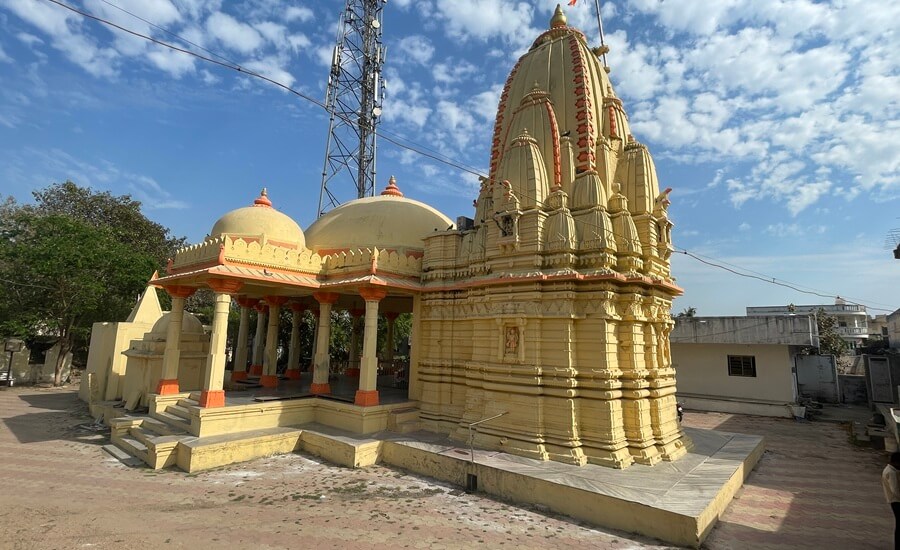
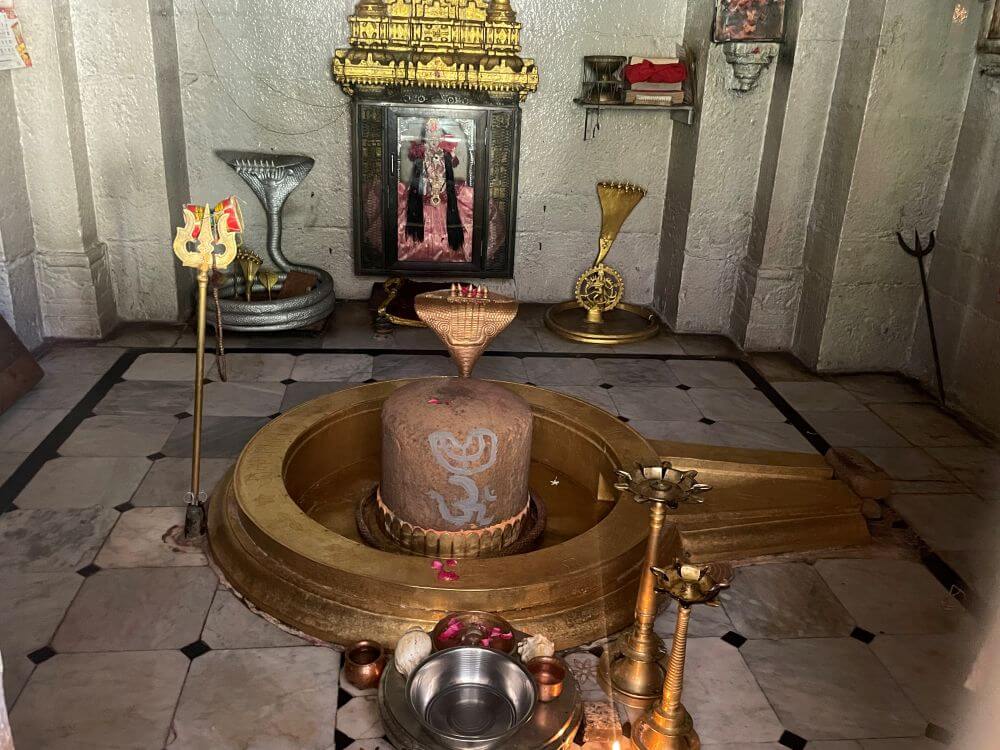
When Lord Swaminarayan was young, he was known as Neelkanth Varni. Around 230 years ago, during his spiritual pilgrimage across India, he visited Dabhoi and spent a night at the Vaghnath Mahadev Temple, which still stands today. Devotees believe the Shivling in this ancient temple is spiritually active (Jagrit). Many locals begin their auspicious endeavors only after having a darshan (viewing) of this Shivling. The traditional procession held here on Mahashivratri is especially well-known.
Dabhoi, a major taluka in Vadodara district, was historically known as Darbhavati, Darbhikagram and Darbhavatipura. There are several legends linked to the ancient Vaghnath Mahadev Temple. It is said that a sage named Darbha Rishi once meditated here, and the town was named after him. 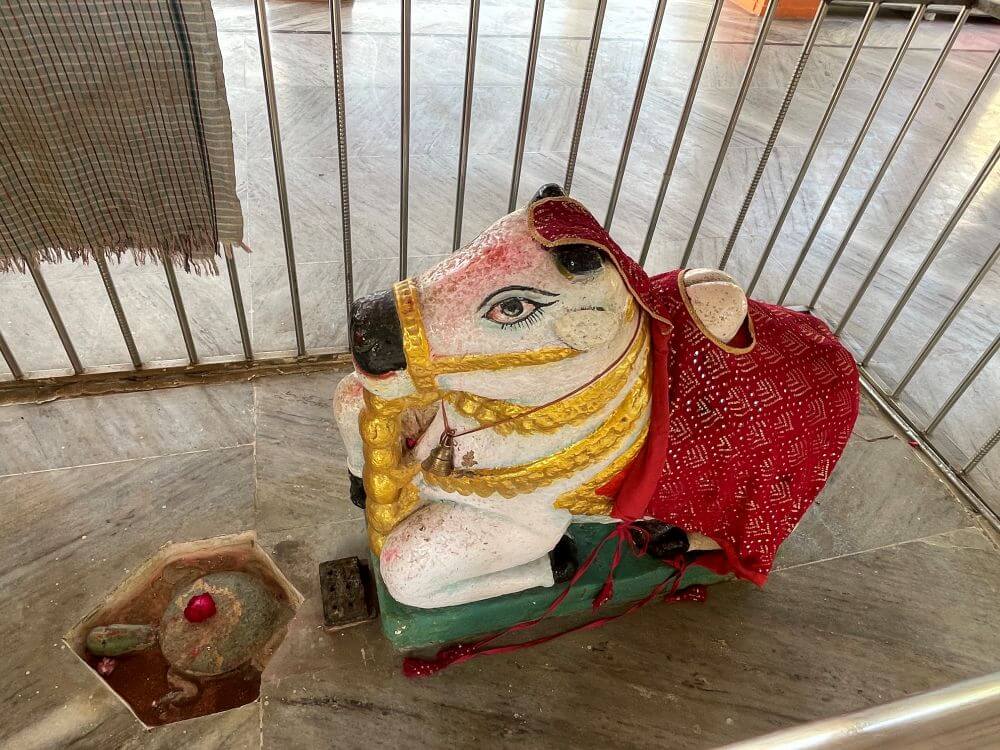 When Neelkanth Varni visited this region, he first went to Kuber Bhandari Temple in Karnali, then came to Dabhoi, where he offered prayers at Vaghnath Mahadev Temple and even fed the Nandi in the temple. He is believed to have stayed there overnight. In remembrance of this event, a marble platform and a canopy (chhatri) were built near the temple’s assembly hall, housing the holy footprints (padukas) of Neelkanth Varni (Swaminarayan).
When Neelkanth Varni visited this region, he first went to Kuber Bhandari Temple in Karnali, then came to Dabhoi, where he offered prayers at Vaghnath Mahadev Temple and even fed the Nandi in the temple. He is believed to have stayed there overnight. In remembrance of this event, a marble platform and a canopy (chhatri) were built near the temple’s assembly hall, housing the holy footprints (padukas) of Neelkanth Varni (Swaminarayan).
Dabhoi is located 30 kilometers from Vadodara on the route to the Sardar Sarovar Dam. The town is referenced in in the sixth-century astronomical text ‘Romak Siddhant’, as well as in Jain texts like Hemchandra’s ‘Yogartrevrutti’ and Ramachandra’s ‘Vikramcharitra’. Historically ruled by the Chavda, then Chalukya and later the Vaghela dynasties, it became a district headquarters under the Mughals, and later came under the Gaekwad princely state of Baroda. 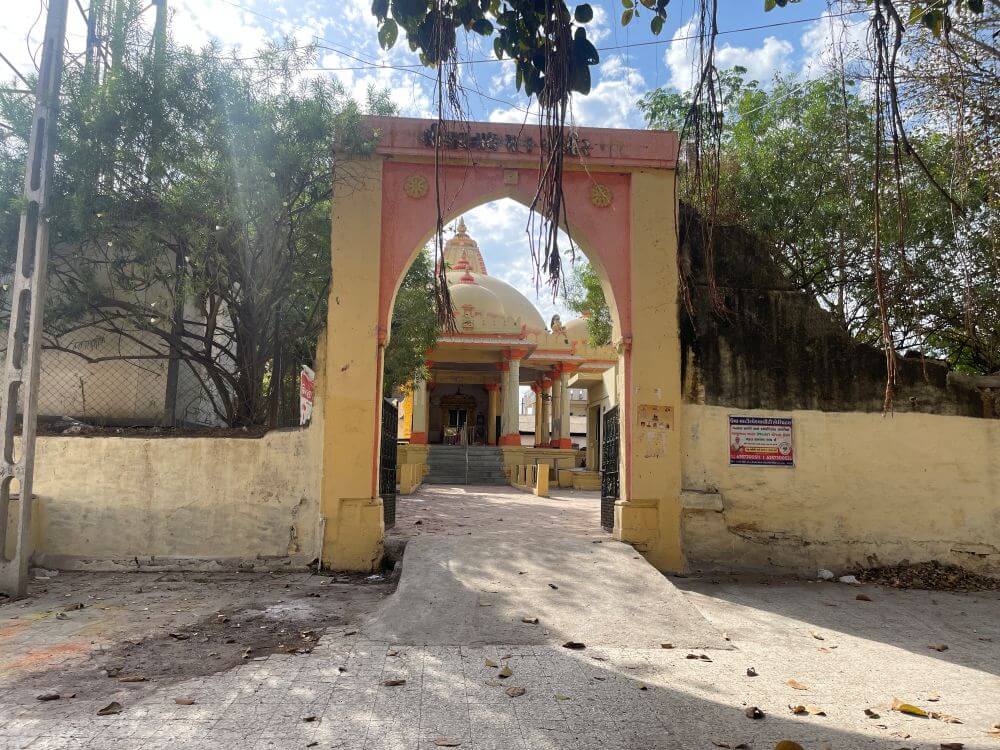 Dabhoi has been a prominent centre for textiles, silver and copper utensils and bangles. It is home to several ancient temples and among them, the Vaghnath Mahadev Temple is a key spiritual site for thousands of devotees.
Dabhoi has been a prominent centre for textiles, silver and copper utensils and bangles. It is home to several ancient temples and among them, the Vaghnath Mahadev Temple is a key spiritual site for thousands of devotees.
The temple complex has a high-arched gateway. In the spacious front courtyard stands the temple building. To the left of the temple is the shrine housing Swaminarayan’s Padukas, and to the right is a square-shaped temple of Bhathiji Maharaj.
The Vaghnath Mahadev Temple stands on a raised plinth and is architecturally divided into the mukhmandap (entrance hall), sabhamandap (assembly hall), antaral (intermediate hall) and garbhagriha (sanctum). 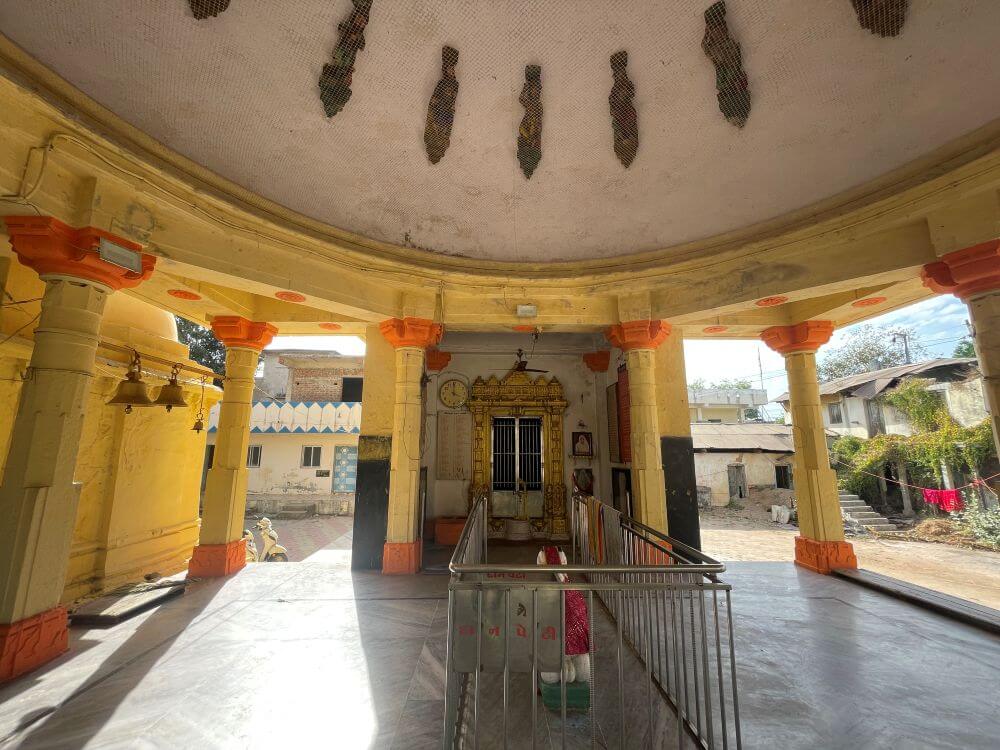 The sabhamandap is open on all three sides. All sections – the entrance hall, sabhamandap, and sanctum – have domed shikharas (spires). The ceilings of the entrance and assembly halls are adorned with carvings of sages and saints.
The sabhamandap is open on all three sides. All sections – the entrance hall, sabhamandap, and sanctum – have domed shikharas (spires). The ceilings of the entrance and assembly halls are adorned with carvings of sages and saints.
In the sabhamandap, there is a stone idol of Nandi facing the sanctum, and in front of him is a tortoise (Kurma). The inner dome of the sabhamandap features Yaksha (celestial being) carvings. In the antaral, there are vermillion-smeared idols of Lord Ganesha and Lord Hanuman. The ancient design of the sanctum doorway reflects its historical significance. The entrance includes three doorframes, sculpted pillars on each side, and intricately carved decorations above. The upper panel (uttarang) resembles a miniature temple structure. The base of the door pillars features relief carvings of gatekeepers Jay-Vijay and female attendants. 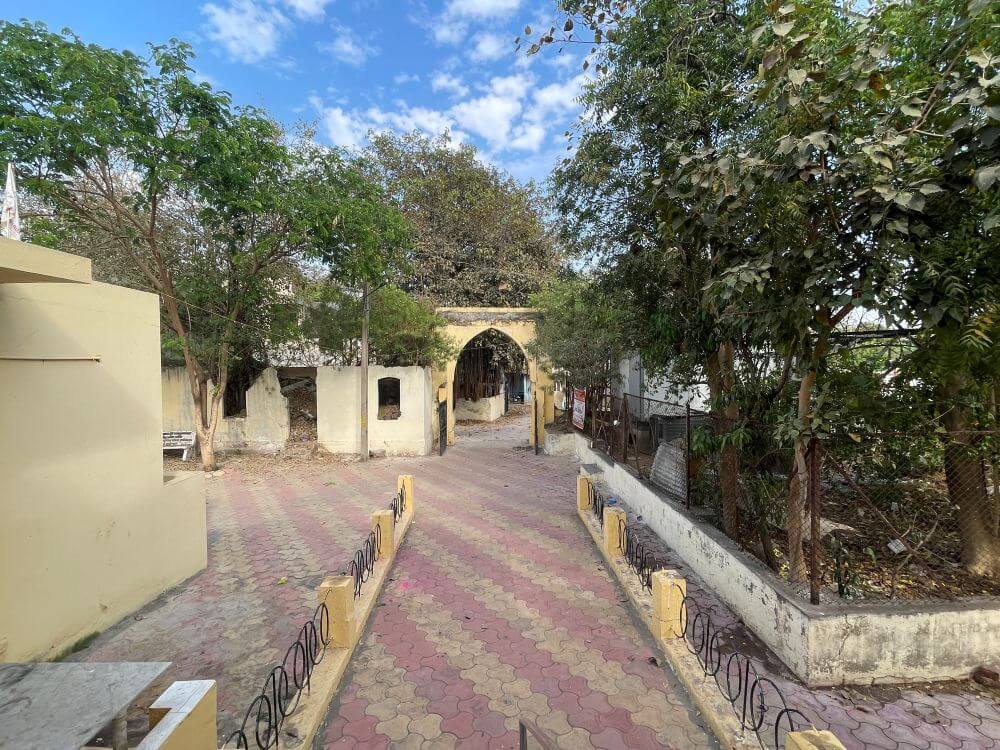 A crescent-shaped stone sits atop the mandarka (threshold), flanked by mythical faces (Kirtimukhas) on either side.
A crescent-shaped stone sits atop the mandarka (threshold), flanked by mythical faces (Kirtimukhas) on either side.
Inside the sanctum, the Shivling of Vaghnath Mahadev is placed in the center on the ground. It is a large elliptical-shaped Shivling, encircled by a brass jaladhari (base structure). A copper cobra hood is placed above the Shivling. Behind it, on a wall-mounted golden-plated shrine, sits a beautiful idol of Goddess Parvati. The intricate carvings on this shrine reflect the designs on the sanctum’s upper panel. On either side of Parvati are large metal idols of serpents. Several other Shivlingas are installed beside the left side of the temple near the entrance hall.
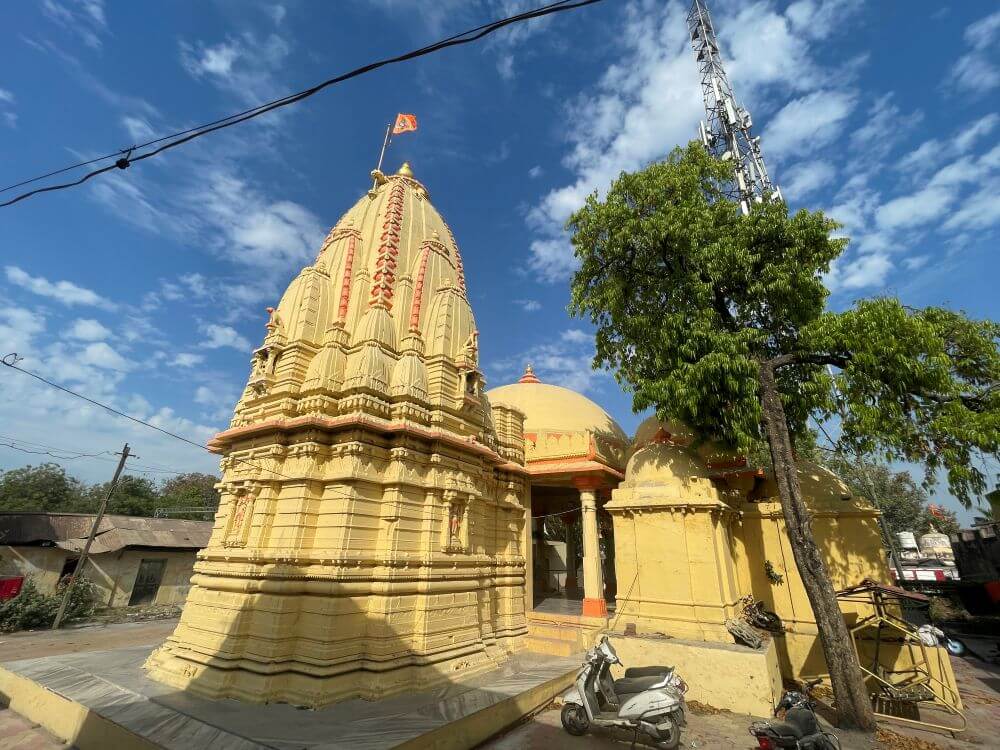 During festivals, the Shivling is decorated with floral arrangements and a face mask and colored turbans are adorned on it. The Vaghnath Mahadev Temple Trust manages the temple. Hundreds of devotees visit daily for darshan and perform Abhishek (ritual bathing) and worship. Various religious events are held year-round, with colorful lighting during festivals.
During festivals, the Shivling is decorated with floral arrangements and a face mask and colored turbans are adorned on it. The Vaghnath Mahadev Temple Trust manages the temple. Hundreds of devotees visit daily for darshan and perform Abhishek (ritual bathing) and worship. Various religious events are held year-round, with colorful lighting during festivals.
On Mahashivratri, hundreds of devotees offer Abhishek, bael leaves, and flowers to the Shivling. A grand procession is carried out from the temple, where a decorated palanquin carrying the Shiva mask is taken through the streets. Devotees dressed in traditional attire chant ‘Har Har Mahadev’ and join the procession. The palanquin is welcomed and the Shiva mask worshipped at several ancient temples, including the Swaminarayan Temple in the town. In April, the HariKrishna idol from the Swaminarayan Temple is brought here with fanfare, and a joint worship of both deities is performed. On Somvati Amavasya and every Monday in Shravan month, hundreds visit for Abhishek. On the Gujarati New Year, devotees dressed in new clothes come for darshan early in the morning.



